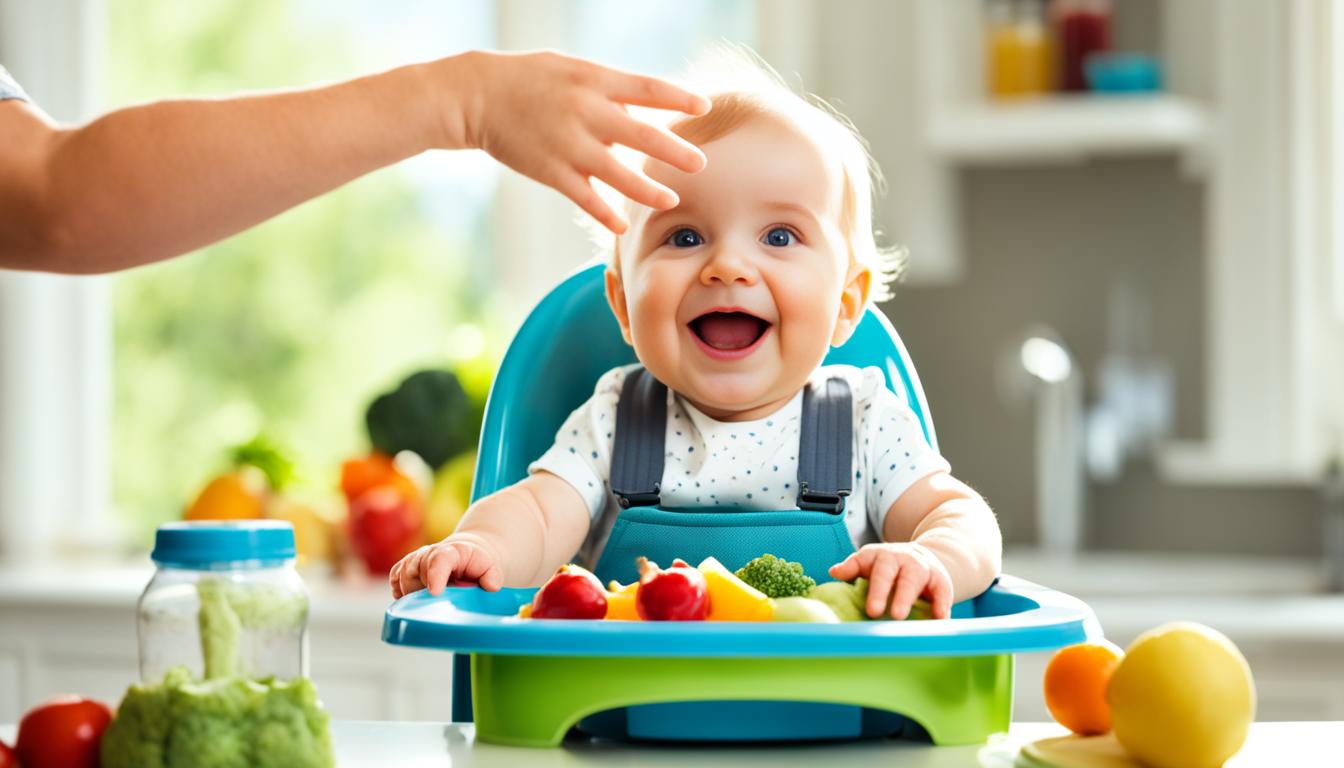Baby Playing In Crib Instead Of Sleeping – What to Do Next
Babies playing in the crib instead of sleeping can be both endearing and exasperating for parents. While their playful antics may bring a smile to your face, they can also leave you feeling frustrated and exhausted. Understanding the importance of sleep for babies is crucial in addressing this behavior and ensuring their overall well-being. Sleep plays a vital role in a baby’s physical and cognitive development, contributing to their growth and emotional health. However, when your little one chooses playtime over snooze time, it may leave you wondering about the underlying reasons behind this adorable yet challenging behavior.
Skip To The Following Sections
- Is It Normal for Babies to Play Instead of Sleep?
- The Importance of Establishing a Sleep Routine
- Identifying Underlying Sleep Issues
- Creating an Optimal Sleep Environment
- Adjusting Nap Times and Daytime Activities
- Dealing with Separation Anxiety
- Introducing Transitional Objects
- When to Seek Professional Help
Is It Normal for Babies to Play Instead of Sleep?
Is it normal for babies to engage in play instead of sleeping? As a parent, you may find yourself pondering this question when you see your little one happily playing in the crib during what should be nap or bedtime. Rest assured, this behavior is not uncommon in babies and is often part of their natural development.
Understanding the normal sleep patterns of babies is essential to determine if your baby’s playfulness during sleep time falls within the usual range. Babies have irregular sleep cycles, and it is quite common for them to have short naps throughout the day. Moreover, as they grow and reach new developmental milestones, they may become more interested in exploring the world around them, leading to moments of playfulness during what you hope would be their nap time. For example, when babies learn to roll over or sit up independently, they may find joy in practicing these new skills, even when they are supposed to be resting.
In fact, play is a crucial aspect of a baby’s development. It helps them build essential motor skills, encourages social interaction, and enhances cognitive abilities. So, it’s not surprising that they might occasionally choose playtime over sleep.
Differentiating between playful behaviors and sleep disturbances is essential to address any underlying issues appropriately. While playfulness during sleep time is generally normal, persistent or disruptive behaviors may signal sleep disturbances that require further attention. By understanding your baby’s individual sleep patterns and considering their developmental milestones, you can better support their sleep needs and promote a healthy sleep routine.
The Importance of Establishing a Sleep Routine
Establishing a consistent sleep routine for your baby is of utmost importance, especially if you notice your little one playing in the crib instead of sleeping. A well-structured sleep routine can help create a conducive environment for restful slumber and reduce bedtime playfulness.
To begin with, incorporating white noise or soft music can be a great way to soothe a playful baby and ease them into a peaceful sleep. Moreover, creating a calming bedtime routine can work wonders in encouraging better sleep habits. This routine can involve activities such as reading a bedtime story, engaging in tummy time during their awake time, or using a sleep sack for added comfort.
In fact, daytime activities also play a crucial role in promoting better sleep at night. Engaging in stimulating daytime activities, like language acquisition through play or spending quality time during tummy time, can tire out your baby and help them wind down more easily when it’s time to sleep.
Additionally, as your baby grows, they may experience sleep regression or go through other developmental phases that can affect their sleep schedule. Adapting the sleep routine to accommodate these changes can help ease the transition and ensure your little one gets the rest they need.
By implementing a consistent bedtime routine and tailoring it to your baby’s individual needs and developmental milestones, you can help them establish healthy sleep associations and improve their overall sleep quality. Remember, it may take some time for the routine to take effect, but with patience and persistence, you’ll find that your baby’s crib will transform into a peaceful sleep sanctuary.
Identifying Underlying Sleep Issues
Identifying underlying sleep issues in your baby is crucial when you observe them playing in the crib instead of sleeping. As a parent, it’s essential to be attentive to signs of sleep deprivation, sleep regression, or potential sleep disorders that could be contributing to their playful behavior during sleep time.
Recognizing signs of sleep deprivation, such as a cranky or fussy demeanor, frequent night wakings, or difficulty settling down, can help you understand if your baby is not getting enough sleep. This awareness can prompt you to take appropriate measures to improve their sleep quality.
Sleep regression is another common issue that may occur when your baby reaches certain developmental milestones or experiences big changes in their routine. For instance, when they start crawling or teething, it may disrupt their sleep patterns, causing them to play instead of settling down for a nap or nighttime sleep.
Addressing potential sleep disorders or medical concerns is vital in ensuring your baby’s well-being. If you notice persistent sleep disturbances, such as breathing irregularities, loud snoring, or extreme restlessness, it’s essential to seek professional guidance from a pediatrician or a sleep expert.
Remember, every baby is different, and what works for one may not work for another. By closely monitoring your baby’s sleep behaviors and being aware of any changes or concerns, you can provide the necessary support and ensure they have a safe and comfortable sleep environment to promote restful nights for both you and your little one.
Creating an Optimal Sleep Environment
Creating an optimal sleep environment is key to addressing a baby’s playfulness in the crib instead of sleeping. Designing a sleep-friendly crib with comforting elements can significantly impact your baby’s sleep quality and overall well-being.
To start, it’s essential to ensure the crib is a safe and clutter-free space for your little one. Avoid using crib bumpers and keep blind cords out of reach to reduce any potential hazards during sleep time. Opt for a standard crib that meets safety guidelines recommended by healthcare providers to ensure your baby’s safety.
Regulating the room temperature and humidity is also crucial for better sleep. Use a video monitor to keep an eye on the baby’s sleep environment and ensure it remains comfortable throughout the night. For instance, if the room is too warm, it may lead to restlessness and discomfort, making it harder for your baby to fall asleep.
Utilizing white noise or soft music can create a soothing ambiance that helps your playful baby calm down and transition to sleep. Additionally, consider making the room dark using blackout curtains or other wall hangings to block out any excess light that might be affecting your baby’s sleep.
Choosing a suitable crib mattress is equally important in creating an optimal sleep environment. A firm and supportive mattress will provide the right level of comfort for your baby, ensuring they can settle down more easily for their naps or night sleep.
Lastly, consider using a sleep sack to keep your baby cozy and secure during sleep time. Sleep sacks can be an excellent alternative to loose blankets and ensure your baby stays warm without the risk of suffocation.
By taking these steps to create a safe and comfortable sleep environment, you can help your baby establish healthy sleep habits and ensure they get the rest they need to grow and thrive.
Adjusting Nap Times and Daytime Activities
Adjusting nap times and daytime activities can play a crucial role in addressing a baby’s playful behavior in the crib instead of sleeping. Understanding the relationship between daytime naps and nighttime sleep is essential in establishing a balanced sleep pattern for your little one.
To begin, consider the baby’s age and developmental phase when structuring their nap schedule. For instance, younger babies may require more frequent naps throughout the day, while older babies may need fewer naps but of longer duration.
Ensuring age-appropriate nap schedules for your baby will help prevent overtiredness, which can lead to increased bedtime playfulness. By providing ample opportunity for daytime naps, you can help your baby feel more well-rested and less inclined to play during sleep time.
Engaging in stimulating daytime activities is also vital for promoting better sleep at night. For example, incorporating language acquisition through play or encouraging tummy time can help tire out your baby, making them more likely to wind down and sleep soundly when bedtime arrives.
Additionally, consider the timing of naps during the day. Structuring a morning nap and an afternoon nap can help ensure your baby gets enough rest throughout the day without feeling overly tired at bedtime. Be mindful of the awake time between naps, as this can vary based on your baby’s age and individual sleep needs.
Remember, every baby is different, and their sleep needs may change as they grow and reach new developmental milestones. Being flexible and observant of your baby’s sleep cues can guide you in adjusting nap times and daytime activities to support their overall sleep health and minimize bedtime playfulness.
Dealing with Separation Anxiety
Dealing with separation anxiety is a crucial aspect of addressing a baby’s playfulness in the crib instead of sleeping. Recognizing signs of separation anxiety in babies can help parents implement strategies to ease their little one’s bedtime struggles.
It’s normal for babies to experience separation anxiety as they develop a sense of self and become more aware of their surroundings. During bedtime, this can manifest as crying, fussiness, or resistance when being put in the crib.
To help your baby cope with separation anxiety during bedtime, consider incorporating gradual steps that encourage independent sleep. For instance, create a consistent bedtime routine that includes spending quality time together before putting the baby in their crib. This helps establish a sense of security and comfort before bedtime.
Offer reassurance during the bedtime routine, such as softly singing a lullaby or gently patting their back while they lie in the crib. This can provide a sense of comfort to the baby as they transition to sleep.
Implementing a “gradual extinction” method can also be beneficial in dealing with separation anxiety. This involves gradually increasing the time between comforting interventions during nighttime awakenings. This way, the baby learns to self-soothe and fall back to sleep independently, reducing their reliance on parental presence.
Creating a safe and comforting sleep environment can further ease separation anxiety. For instance, introduce a special transitional object, such as a soft plush toy or a cozy blanket, that the baby can associate with comfort and security during sleep time.
Remember, it’s essential to be patient and consistent when dealing with separation anxiety. Each baby is unique, and it may take time for them to adjust to the idea of falling asleep independently. By providing a loving and supportive atmosphere during bedtime, you can help your little one develop healthy sleep habits and overcome bedtime playfulness caused by separation anxiety.
Introducing Transitional Objects
Introducing transitional objects can be a valuable tool in addressing a baby’s playful behavior in the crib instead of sleeping. These comfort objects play a significant role in promoting better sleep habits and providing a sense of security for your little one.
The concept of transitional objects involves selecting a special item, such as a soft toy or cozy blanket, that your baby can form an emotional attachment to. These objects serve as a source of comfort and familiarity during sleep time, making the transition from playtime to sleep time smoother.
Choosing the right transitional object for your baby is essential. Consider their preferences and reactions to different textures and materials. Some babies may find comfort in a plush toy they can cuddle with, while others may prefer a silky blanket they can hold onto.
To introduce the transitional object, begin by incorporating it into your baby’s daytime play and cuddle sessions. This helps them associate the object with positive feelings and warmth. When it’s time for sleep, place the object near them in the crib, so they can feel its presence and comfort.
Creating positive associations with the transitional object is key. Use encouraging and soothing words when introducing it to your baby. Offer praise and affection when they interact with the object, reinforcing the idea that it’s a source of comfort and security.
Remember that not all babies may immediately take to a transitional object, and that’s okay. Be patient and give them time to develop a bond with it. Some babies may form attachments quickly, while others may take a few weeks or even months.
By incorporating transitional objects into your baby’s sleep routine, you can help them feel more at ease and content during sleep time. These comforting items provide a consistent source of emotional support, reducing their bedtime playfulness and encouraging better sleep habits overall.
When to Seek Professional Help
If the baby’s playful behavior in the crib continues, and it significantly impacts their sleep quality and overall well-being, seeking professional help from a pediatric sleep consultant can be a good idea.
A sleep consultant can offer expert guidance tailored to the baby’s specific sleep challenges and help parents implement effective sleep training strategies, such as reward charts for positive sleep behavior or gradual extinction to address nighttime awakenings.
Helping your baby strike a balance between playtime and sleep time is a journey that requires patience and understanding. Remember that every baby is unique, and what works for one may not work for another. By creating a sleep-conducive environment, establishing a consistent sleep routine, and addressing any underlying sleep issues, you can set the stage for your baby to become an excellent sleeper, bringing restful nights not only for your little one but for the entire family. Cherish the moments of playfulness, as they are part of your baby’s beautiful journey of growth and discovery. As parents, with love and support, you can navigate through the challenges and ensure your baby gets enough sleep to thrive and shine every day.




